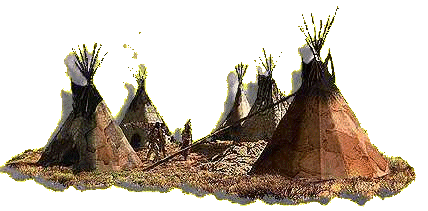
An Enchanted Land
Although the vast territorial holdings have long disappeared since 25,000 Cherokee
ruled over 135,000 square miles covering parts of what are now eight states, a renewed
interest in Cherokee culture and heritage is kept alive through legends and myths. The
Cherokee museum, Indian village, and historic outdoor drama are examples of the rich
heritage kept alive throughout the years.
Unique among the many tribes inhabiting North America, the Cherokee had a written
language created by Sequoyah in the 1820's. By the early 1840's, a Cherokee newspaper,
The Phoenix, was being circulated throughout the territory. Not long ago, Cherokee
students were not permitted to speak their native language in school, but today it's not
uncommon for young and old to converse in Cherokee. The language, almost lost just a
generation ago, is now a popular course in area schools.
Unlike the Plains Indians depicted in western movies, the Cherokee lived in log cabins,
wore turbans and preferred European clothes. Of all the injustices done to the Native
Americans, none equals the cruelty and betrayal culminating in the tragic Trail of Tears,
when the Cherokee Nation was forcefully driven out of the mountains and marched 1,200
miles to Oklahoma. Those who survived the journey to Oklahoma are known as the
Western Band. Descendants of those who hid in the Great Smoky Mountains to avoid
removal are known as the Eastern Band of Cherokee Indians.
TRAIL OF TEARS
center>
"We are now about to take our leave and give kind farewell to
our native land, the country that the Great Spirit gave
our Fathers, we are on the eve of leaving that country
that gave us birth...it is with sorrow we are forced by
the white man to quit the scenes of our childhood... we
bid farewell to it and all we hold dear
Charles Hicks, Tsalagi (Cherokee) Vice Chief on the
theTrail of Tears, November 4, 1838
 : :

|